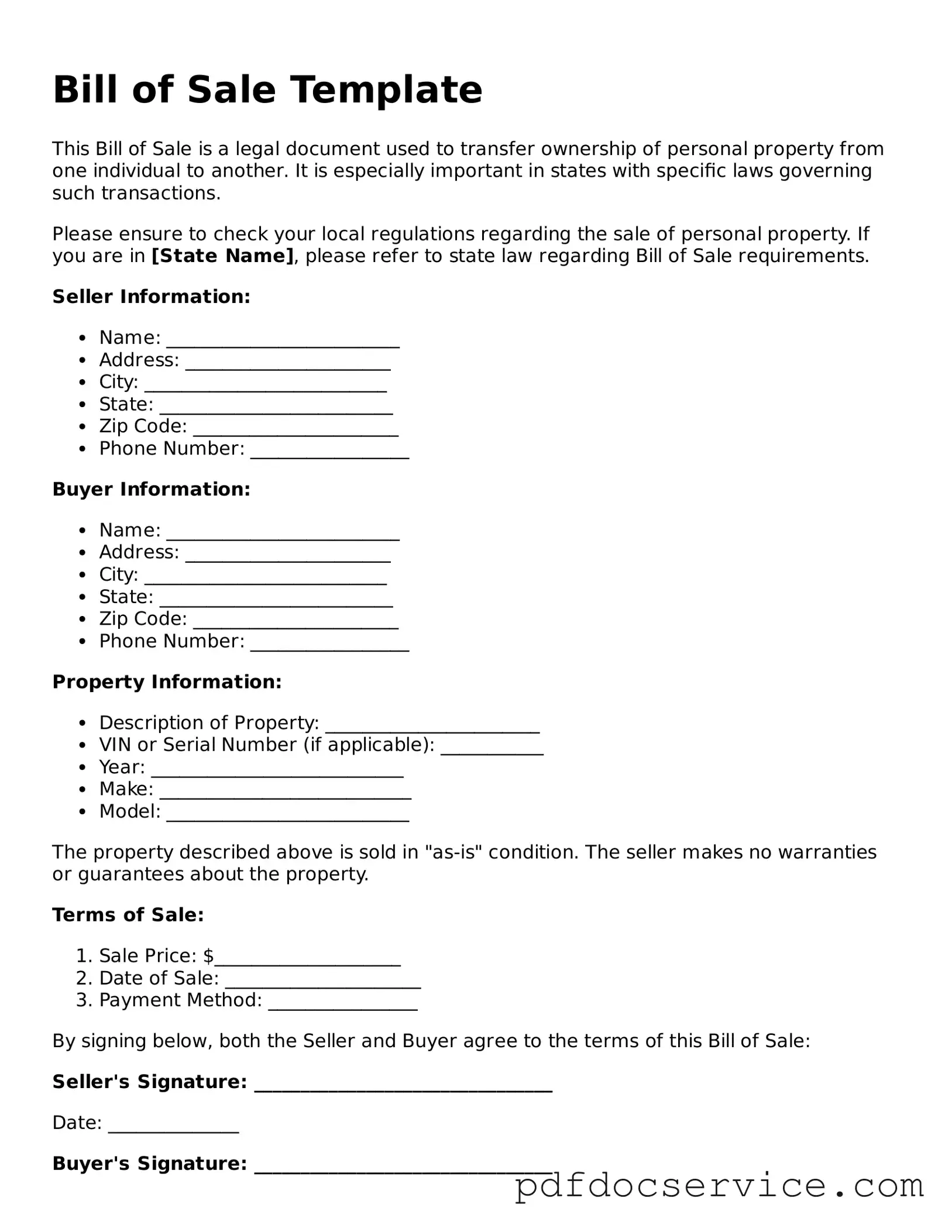What is a Bill of Sale?
A Bill of Sale is a legal document that records the transfer of ownership of personal property from one party to another. It serves as proof that a sale has occurred and outlines the details of the transaction, including the item being sold, the purchase price, and the parties involved. This document is commonly used for vehicles, equipment, and other valuable items.
When do I need a Bill of Sale?
You typically need a Bill of Sale when you are buying or selling significant personal property. This includes items like cars, boats, or large appliances. It is particularly important for transactions that require registration or title transfer, such as vehicles. Additionally, a Bill of Sale can protect both the buyer and seller by providing a record of the transaction.
A comprehensive Bill of Sale should include the following details:
-
The names and addresses of both the buyer and seller
-
A description of the item being sold, including make, model, year, and VIN (for vehicles)
-
The purchase price
-
The date of the transaction
-
Any warranties or guarantees, if applicable
-
Signatures of both parties
Is a Bill of Sale required by law?
While a Bill of Sale is not always legally required, it is highly recommended for transactions involving valuable items. Some states may require a Bill of Sale for certain transactions, especially for vehicles. It is important to check local laws to determine if a Bill of Sale is necessary in your situation.
Can I create my own Bill of Sale?
Yes, you can create your own Bill of Sale. Many templates are available online that you can customize to fit your needs. Just ensure that it includes all the necessary information and is signed by both parties. Alternatively, you can consult with a legal professional to ensure that your document meets all legal requirements.
What happens if I lose my Bill of Sale?
If you lose your Bill of Sale, it can complicate matters, especially if you need to prove ownership or if a dispute arises. If you have a copy of the document or any related correspondence, that can help. In some cases, you may need to create a new Bill of Sale and have both parties sign it again to reaffirm the transaction.
Can a Bill of Sale be used as a receipt?
Yes, a Bill of Sale can function as a receipt. It provides proof of purchase and details the transaction. For both buyers and sellers, it serves as a record that can be useful for tax purposes or in case of disputes. Keeping a copy for your records is a wise decision.
Are there any specific state requirements for a Bill of Sale?
Yes, specific requirements for a Bill of Sale can vary by state. Some states have particular forms that must be used, while others may have specific information that needs to be included. It is essential to research your state’s laws to ensure compliance and to check if any additional documents are needed for your transaction.
